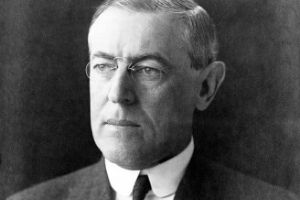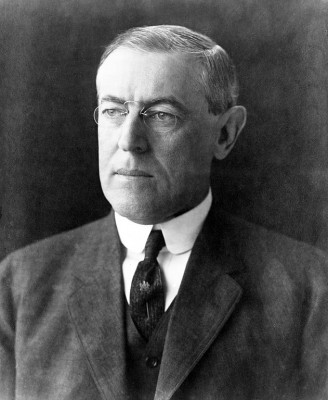Baltimore Helps Elect a President

A blog post by Executive Director Marvin Pinkert.
As I write this post the results of Tuesday’s election are still unknown. Rather than join the crowd that’s trying to speculate on this year’s contest, I turned my gaze to an election that was resolved on this night (November 5) one hundred years ago.

The election of 1912 was a spirited three-way contest among President William Taft (running for re-election), New Jersey Governor Woodrow Wilson and former President Theodore Roosevelt (seeking to reclaim his office on the “Bull Moose” ticket).
1912 was also the last time a national political convention was held in Baltimore. Baltimore was the dominant host of political conventions from their inception in 1832 through the mid-1800s. But by 1912 it had been at least 30 years since Baltimore served as host. Wilson’s 1912 campaign manager, William McCombs of Arkansas, claims to have engineered the selection of Baltimore over St. Louis (home of Wilson’s chief rival House Speaker “Champ” Clark). His plan was to fill the streets outside the convention hall with supporters from Wilson’s home states (Virginia and New Jersey). Baltimore was also familiar territory for Wilson who had earned his doctorate from Johns Hopkins while living in Bolton Hill. The convention was held in the Fifth Regiment Armory at the intersection of Howard and Preston.
Seeing the potential of a Baltimore connection, I asked Jobi if we had anything in the collection from the 1912 convention. She was understandably dubious, but jumped in to make a search of our Past Perfect database. To our mutual amazement, among the hundreds of items connected to the word “convention” there was one prospect that looked promising. We grabbed the call number and headed for the basement. There in the Robert Weinberg collection we found a small booklet/ travel guide rich with photographs simply labeled “The Baltimore Book”. It became clear on closer examination that this was a book the organizers of the convention distributed to delegates to orient them (and brag about) the city. The book touted Baltimore’s thriving industries (including straw hats), its low crime rate and excellent schools. It made special note that Baltimore was home to “450 churches of all denominations”. It contained photos of at least six houses of worship. Not surprisingly neither the Lloyd Street Synagogue nor any other synagogue was featured. Though there was a sizable Jewish community in the city in 1912 – for convention delegates we were simply invisible.
Wilson was nominated in this contentious convention after Williams Jennings Bryan decided to swing his support to the New Jersey governor, denouncing Champ Clark as “the candidate of Wall Street” (apparently this expression is at least 100 years old). The election of Wilson would also mark a shift in Jewish-American politics. While Wilson’s academic writings reveal a man deeply ingrained in repugnant ideas about race and ethnicity, Wilson as president supports the Balfour Declaration, the rights of Jews in Eastern Europe and, perhaps most famously, appoints Louis Brandeis as a justice of the Supreme Court. All of these measures were factors in a shift to support of the Democratic party within the Jewish community.
